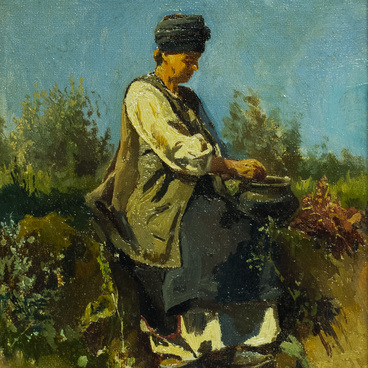The French sculptor Adrien Étienne Gaudez was born in Leon in February 1845. He graduated from the School of Fine Arts in Paris, where he studied in the workshop of the famous sculptor François Jouffroy. He made his debut at the Salon in 1864 with his first work — “Nymph Egeria”, subsequently regularly exhibited at the Salon until 1899. In 1881, he received a first-class medal for his masterpiece. He worked in monumental, memorial and freestanding sculpture. He took part in the Franco-Prussian War and, as a former prisoner of war, created a monument to the French victims of the war for Magdeburg. Gaudez’s early works were mostly classical in nature, but at the end of his career he created sculptures that can be attributed to Art Nouveau.
Adrien Étienne Gaudez made several monuments erected in different cities of France: to the French architect and engineer Jean-Rodolphe Perronet in Neuilly-sur-Seine, to the French writer Jean-Pierre Claris de Florian in Alois, as well as sculptures of the artist Théodore Rousseau on the Town Hall in Lille.In the second half of the 19th century in France, after all the wars and revolutions, interest in its past, in the “good old days” of chivalry, was revived in society. This nostalgic theme was reflected in the work of several artists, including Adrien Étienne Gaudez.
The image of a young man with a sword by Gaudez is inspired by medieval legends about undying chivalry. The narrative is revealed through the symbolic attributes: the young man has dug up a chest with a hoe, but he has found a sword in it instead of jewelry. In the Middle Ages, the sword was a symbol of chivalry, a noble weapon (the spear was considered a commoner’s one). The “buried” and newly found sword is the inheritance to be won back with the help of valor.
This sculpture is a characteristic example of bronze sculpture of the last quarter of the 19th century, when the public was fascinated with allegorical compositions, which often had an edifying character. The high professionalism of the sculptor is evident in the chosen composition, the emphasized clarity of the silhouette, in the modeling of the figure, the complex detailing of individual elements, and the successful use of olive patina.





